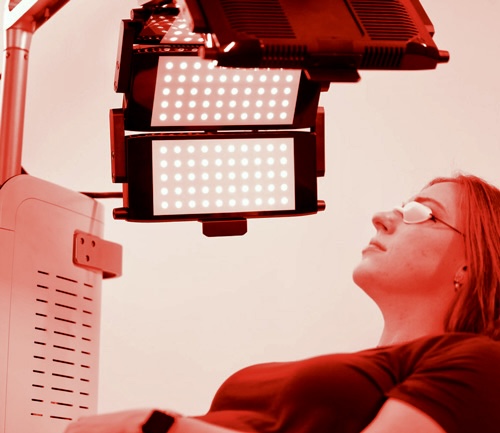Low-Level Light Therapy for Dry Eye
Ocular Surface Disease is a common condition that occurs when your tears aren’t able to provide adequate lubrication for your eyes.
 This can lead to discomfort, visual disturbances, and potential damage to the eye surface. One emerging treatment for this condition is LowLevel Light Therapy (LLLT).
This can lead to discomfort, visual disturbances, and potential damage to the eye surface. One emerging treatment for this condition is LowLevel Light Therapy (LLLT).
What is Low-Level Light Therapy?
Low-Level Light Therapy is a non-invasive treatment that uses specific wavelengths of light to stimulate cellular activity. It’s commonly used in various medical fields, including dermatology and physical therapy, due to its ability to promote healing and reduce inflammation.
How Does LLLT Work for Ocular Surface Disease?
In the context of dry eye syndrome, LLLT aims to improve the function of the Meibomian glands. These glands are responsible for secreting oils that help stabilize the tear film and prevent tear evaporation. Dysfunction of these glands is a major contributor to dry eye symptoms.
LLLT works by:
- Stimulation of Meibomian Gland Activity: LLLT helps enhance the secretion of oils, which are crucial for maintaining a healthy tear film.
- Reduction of Inflammation: The therapy reduces inflammation in the eyelids and surrounding areas, which can alleviate symptoms.
- Improved Blood Flow: By enhancing blood circulation, LLLT supports the health and function of the ocular surface.
Benefits of LLLT for Ocular Surface Disease
- Non-Invasive: LLLT is a painless and non-surgical treatment option.
- Quick Sessions: Treatments are usually brief, often lasting less than 30 minutes.
- Minimal Side Effects: Patients typically experience little to no adverse effects.
- Enhanced Comfort: Many patients report significant relief from dry eye symptoms.
What to Expect During Treatment
During an LLLT session for dry eye, patients generally sit comfortably while a specialized device emits light onto their eyelids. The therapy is usually repeated over several sessions, depending on the severity of the condition and the treatment plan devised by the healthcare provider.
Low-Level Light Therapy presents a promising option for individuals struggling with Ocular Surface Disease, particularly those with Meibomian gland dysfunction. As research continues to evolve, LLLT may become more widely adopted as a standard treatment for enhancing eye comfort and health.
Always consult with an eye care professional to determine the most suitable treatment options for your specific condition.

